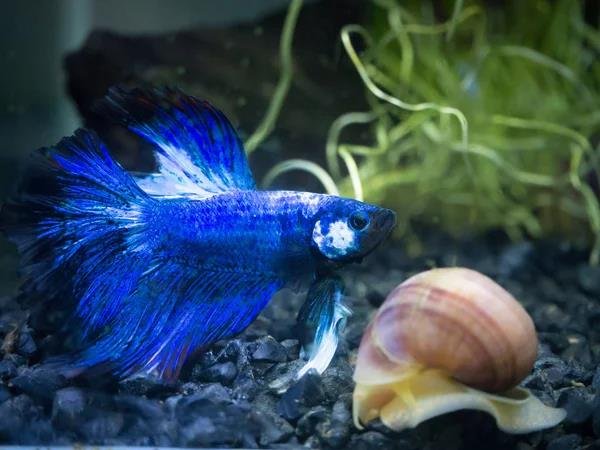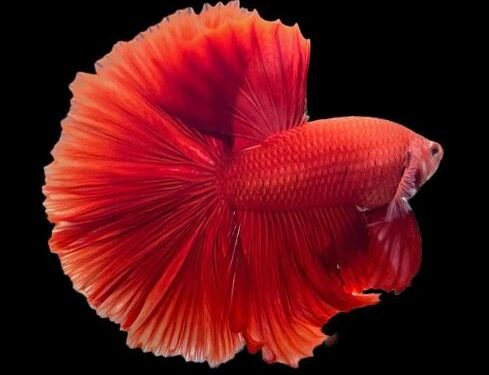Betta fish, also known as Siamese fighting fish, are small freshwater species notable for their vibrant colours and elongated fins. They thrive under warm conditions and are famously quarrelsome when paired with other Bettas.
Understanding Betafish care and maintenance is vital for their health and longevity. Adequate knowledge ensures appropriate habitat conditions, diet, and preventive measures against diseases largely enhancing your bond with this beautiful creature.
Background Information on Betta Fish
Origin of Betta fish
The Betta fish, popularly known as Siamese fighting fish, originates from Southeast Asia. They inhabit rice paddies, swamps and shallow water bodies in Thailand, Vietnam, Cambodia and Malaysia where the water is stagnant or slow-moving.
Characteristics and behavior
Characteristics and behaviour are distinct features reflecting our personality. Characteristics like honesty, and kindness are innate while behaviour involves how we interact socially, reacting to situations based on everyday experiences or conditioning over time. Both shape an individual’s identity.
Different types of species
Different types of species refer to distinct forms of organisms in biodiversity, varying distinctly on DNA level. Classifications include Animalia-like mammals and birds and Plantae such as ferns and mosses locales globally.
Setting Up the Betta Fish Tank
Choosing the right tank size
Choosing the right tank size is crucial. Assess immediate needs and future growth to make an informed choice. Size affects overall maintenance, habitat stability, and the health of your aquatic or reptile inhabitants.
Importance of water quality and temperature
Water quality and temperature are vital for maintaining healthy ecosystems. High-quality water supports biodiversity, while correct temperatures regulate aquatic life metabolism and reproduction, ensuring the survival of various species in our environment.
Essential tank accessories, like plants and hiding places
Essential tank accessories include plants and hiding places, which provide a natural environment for aquatic life. They offer shelter, and breeding spaces, enhance comfort, reduce stress and help improve the overall health of the aquarium inhabitants.
Cycling the tank before introducing fish
Before introducing fish into a new aquarium, it’s essential to cycle the water tank. This helps establish beneficial bacterial colonies that aid in waste decomposition, ensuring a healthy environment for your fish.

Feeding Your Betta Fish
Understanding Betta fish diet
Betta fish are carnivorous requiring a diet high in protein and fiber. They thrive on live or frozen daphnia, brine shrimp, bloodworms, and specially formulated Betta pellets for their nutrition requirements.
Different types of Betta fish food
Betta fish food comes in various forms including pellets, flakes, live or frozen foods like brine shrimp and bloodworms. These provide balanced nutrition to support Betta’s health, immune system, and vibrant colouration.
Feeding frequency and portion sizes
Feeding frequency and portion sizes play vital roles in maintaining a healthy metabolism. Regular small meals bolster energy levels, promote better digestion, prevent overeating and aid in sustainable weight management strategies.
Dangers of overfeeding Betta fish
Overfeeding Betta fish can lead to obesity, constipation, decreased mobility and shorter lifespan. Moreover, excess food decays in water, boosting harmful toxins and affecting their overall health and the aquatic environment drastically.
Daily and Weekly Maintenance Needs
Daily Maintenance
Check Water Temperature
Ensure the water temperature remains between 76-82°F (24-28°C). Use a reliable aquarium thermometer.
Observe Your Betta
Monitor your Betta’s behaviour and appearance. Look for signs of stress, illness, or unusual behaviour such as lethargy, discolouration, or fin damage.
Feed Your Betta
Provide a balanced diet of high-quality Betta pellets or flakes. Supplement with occasional treats like frozen or live foods (brine shrimp, bloodworms). Feed in small amounts 1-2 times a day, ensuring all food is consumed within a few minutes.
Check Filter and Equipment
Ensure the filter is running smoothly and other equipment (heater, lights) are functioning properly.
Weekly Maintenance
Partial Water Change
Replace 25-30% of the tank water with fresh, dechlorinated water. This helps maintain water quality and removes toxins that can accumulate.
Clean the Tank
Use an aquarium vacuum or siphon to remove debris from the substrate. Clean the tank walls with a sponge or algae scraper.
Inspect and Clean the Filter
Rinse filter media in old tank water (not tap water) to remove accumulated debris without killing beneficial bacteria. Replace filter media as needed according to the manufacturer’s recommendations.
Check Water Parameters
Test the water for ammonia, nitrites, nitrates, and pH levels using a reliable test kit. Ensure the parameters are within safe ranges for Betta fish.
Trim and Maintain Plants
If you have live plants, trim dead or overgrown parts. Ensure plants are healthy and not decaying, as decaying plants can pollute the water.
By following these daily and weekly maintenance routines, you can create a healthy and stable environment for your Betta fish, promoting their well-being and longevity.
Conclusion
Caring for Betta fish can be a rewarding experience, bringing vibrant colour and lively personality into your home. Ensuring the health and happiness of your Betta requires attention to their specific needs, including the right tank size, water quality, diet, and environmental enrichment. By maintaining clean water, providing a balanced diet, and offering a stimulating environment, you can enjoy the company of a healthy and thriving Betta fish. Remember, a well-cared-for Betta can live a long and fulfilling life, bringing joy to your home for years to come. Happy fish keeping!












